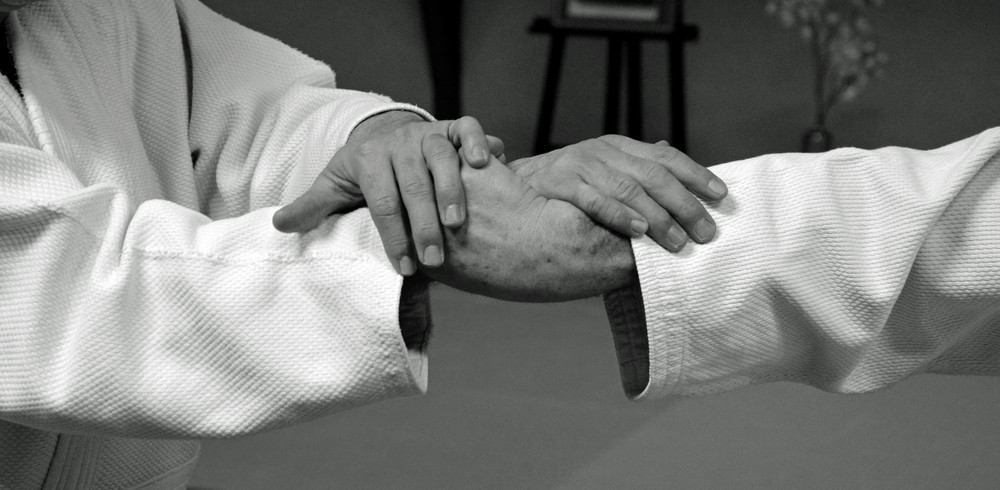The current categorization of Aikido techniques splits up the content of the technical program into six principles, ikkyo, nikyo, sankyo, yonkyo, gokyo and rokyo, as the result of a development and a grouping of legacy principles that derived from war techniques, or bujutsu.
It is known and repeated to death that Aikido is an art that doesn’t foresee any form of competition. Yet it is studied through the very same principles that inspired for centuries any form of Japanese combat art, therefore Morihei Ueshiba, the Aikido founder surely intended to use such principles to communicate and develop some kind of skills related not only to the martial aspect of the techniques but also to the budo, to the evolutionary path of the individual who trains in the Dojo by repeating those techniques.
So, what is the purpose of studying nikyo?
If we look at its mechanical aspects, nikyo is a joint-lock technique that results in extreme pain. It allows one to control an opponent by destroying his will to continue fighting. Nikyo is accomplished by flexing and adducting an opponent’s wrist producing an instantaneous sharp pain that causes him to fall to his knees involuntarily to alleviate the pressure. The exact etiology of the pain elicited by this technique has been obscure to many practitioners. The usual explanations have been nerve compression, joint capsular stretch, tendon/muscle strain, or partial ligaments’ disruption. Studies of a cadaver’s wrist have shown that nikyo forcibly compresses the pisiform bone against the ulna, two bones that do not normally articulate. The intense pain thereby produced results from stimulation of the periosteal nerves in these bony surfaces.
So far, the “scientific” definition of what nikkyo is.
Yet, again, what is its purpose?
When you look at an Aikido class practicing nikyo, you’ll probably see a lot of “hands’work”, a great amount of wrists’grabbing, twisting and pain on the faces of those who receive the techniques and some smiley evil faces of those who will perform it.
While the technical aspects of the second principle may be learned, taking some time to develop the mastery that makes the technique fluid, powerful and respectful of the opponent, the deeper meaning of nikkyo requires more time to be fully investigated. In truth, maybe the whole training life.
When blocking the partner’s wrist and flexing it against the forearm while pushing out the elbow, time becomes more dense, as it often happens when applying principles.
The one who does nikyo feels a new sense of power -and therefore responsibility. A newer power and greater than that one experienced in merely blocking the partner by applying ikkyo. In facts, if properly performed, nikyo leads to the immobilization and control by means of the menace of a joint dislocation or break.
Nikyo is therefore the first opportunity provided by the technical program to every aikidoka to experience the power of hurting partners in a definitive way.
At the same time, the one who receives nikyo feels a kind of pressure which has clear threshold to be recognized. Resisting to that pressure without bending and kneeling leads surely to a permanent damage.
Again: why do we train nikyo?
In a real combat situation, probably nikyo won’t be the first reaction that our system will trigger. Immaturity may lead many people to perceive themselves as professional warriors, ready to face every threat, just because of their experience on the mat and their knowledge of the program.
Probably, we train the second principle because of its capability to clearly show the power we have.
The power to destroy our partners’ wrist – and to decide not to.
The power to resist to force – and to understand that flexibility and letting it go preserves us from grater pain.
The power to definitively win – and recognizing it’s useless to win subduing others.
The power to accept to be defeated – and finding a way to rise again.

